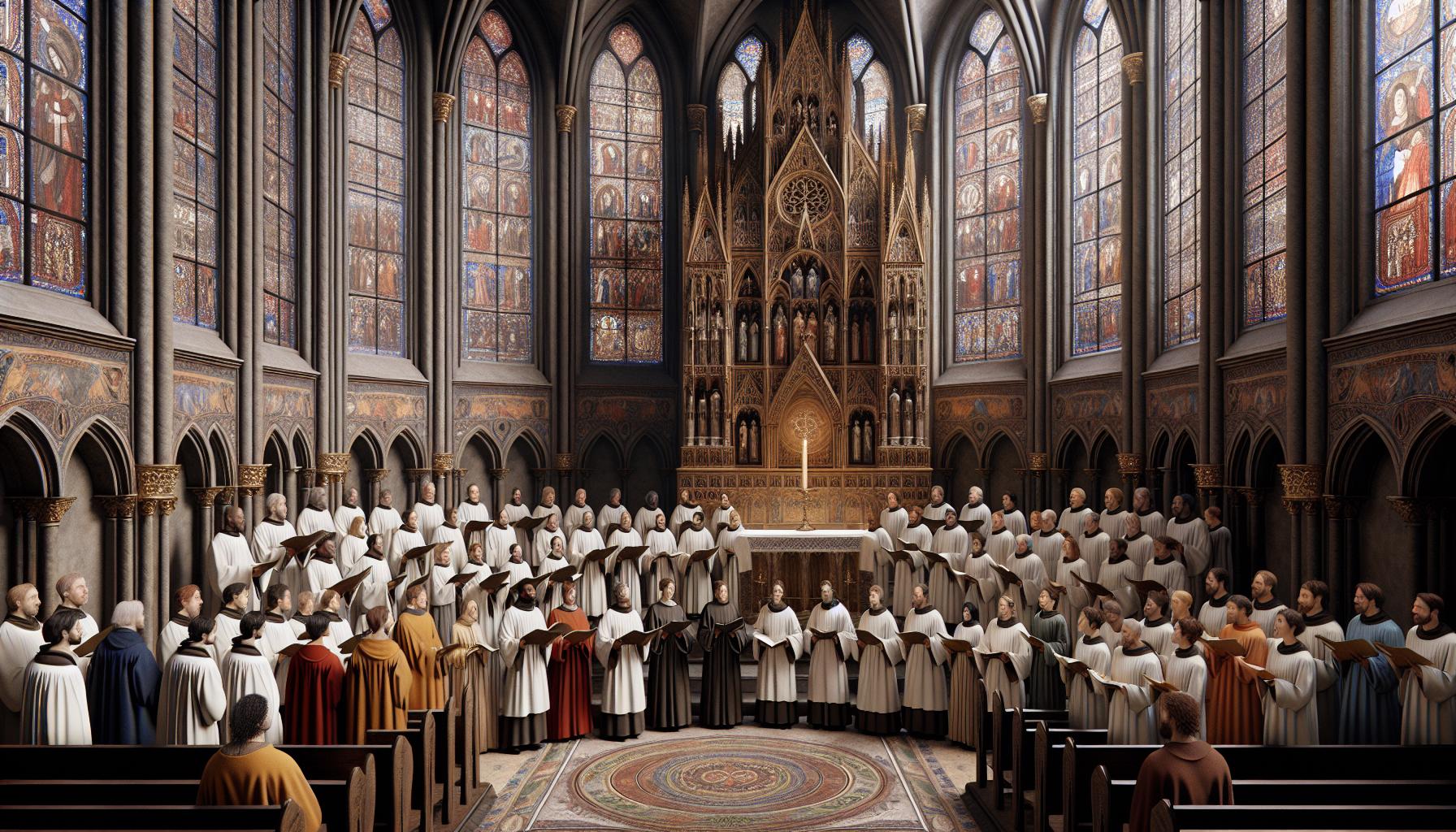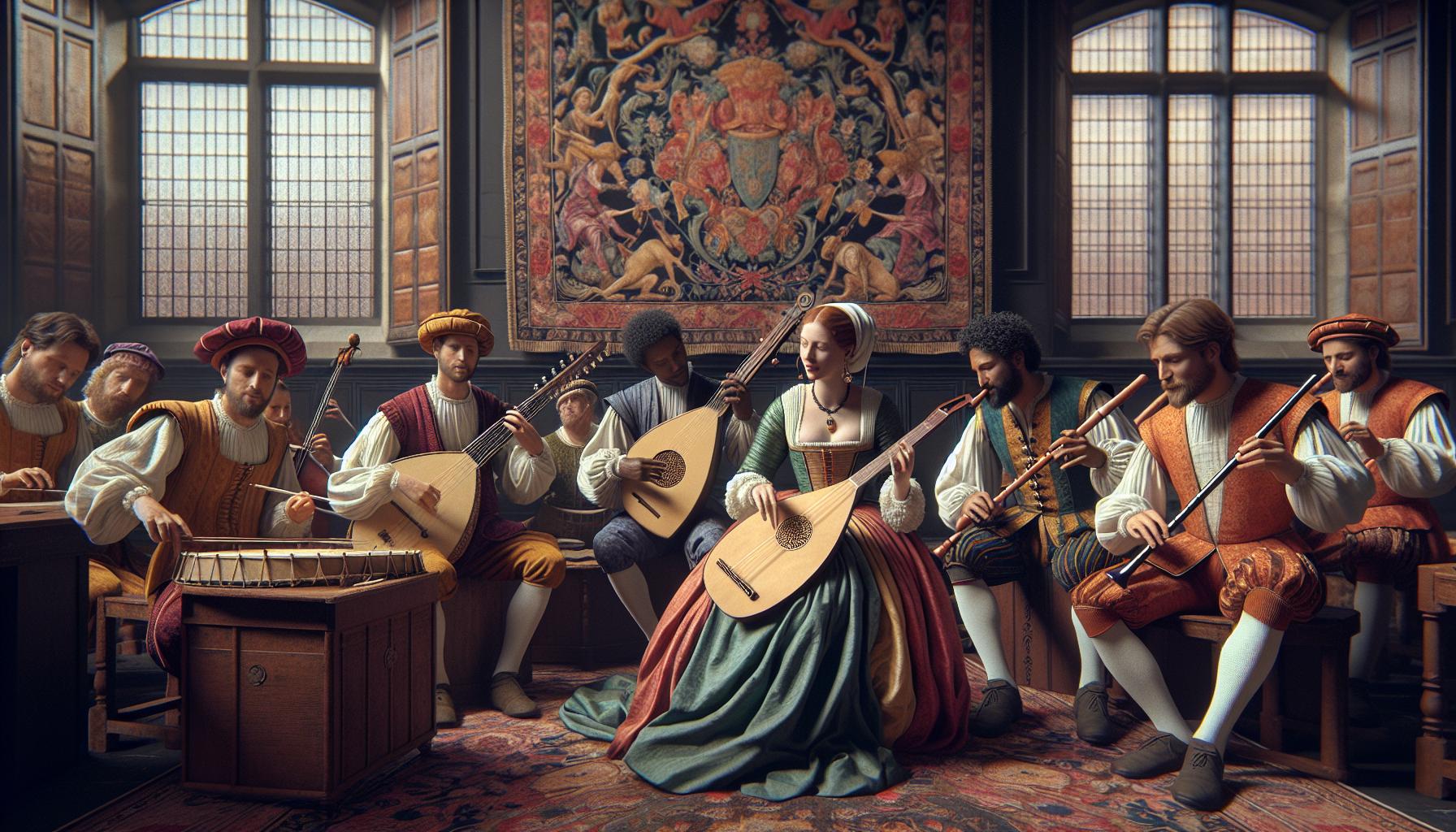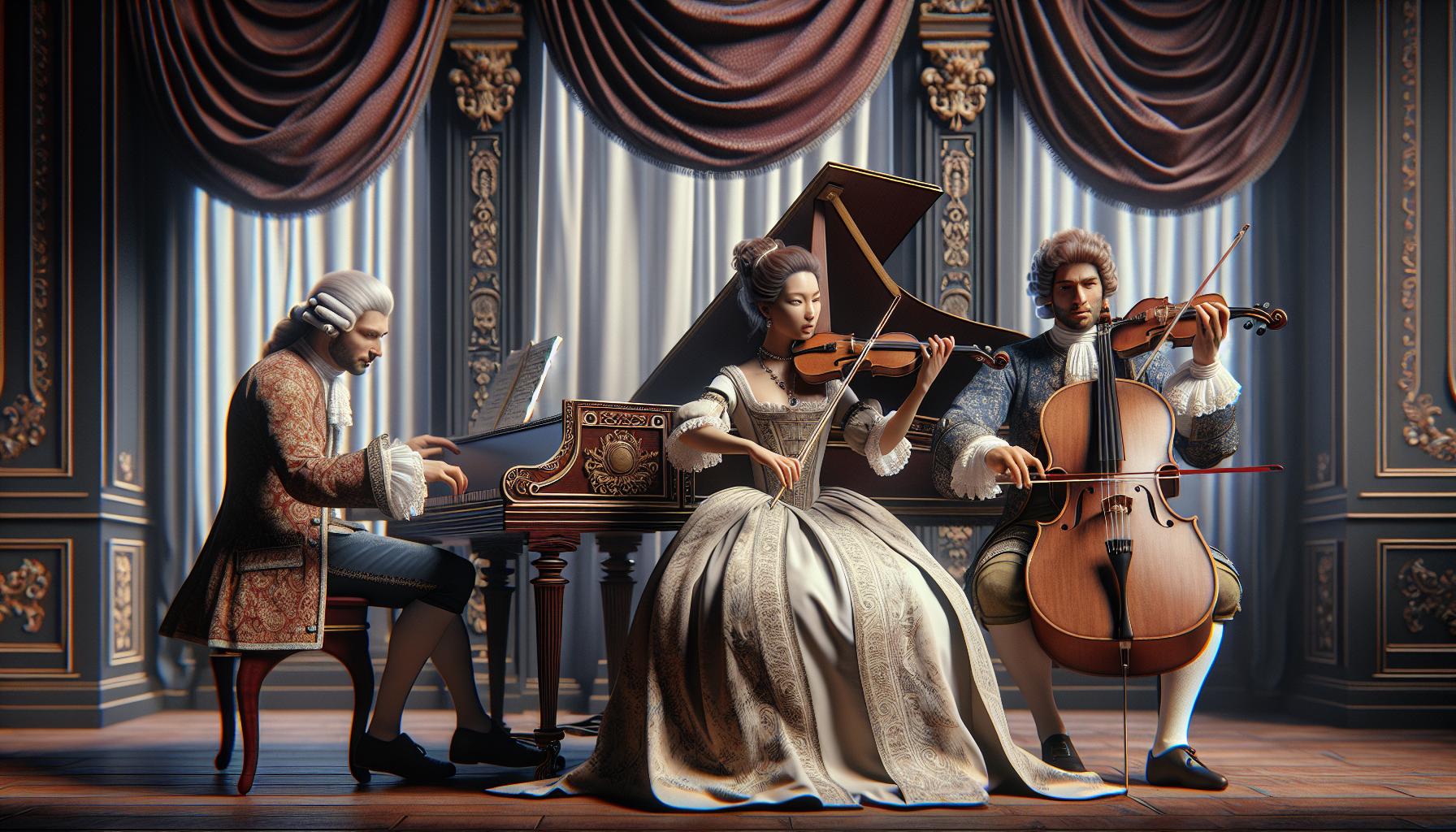Music has been an integral part of human culture for centuries, evolving through various periods that reflect societal changes and artistic movements. Each era brought unique styles, instruments, and innovations that shaped the way music is created and experienced. From the intricate polyphony of the Medieval period to the expressive melodies of the Romantic era, understanding these periods offers a fascinating glimpse into the evolution of sound.
As listeners explore the rich tapestry of music history, they uncover the influences that have defined genres and trends across time. This journey through music history not only highlights the creativity of composers and musicians but also reveals how music mirrors the human experience. By delving into the distinct characteristics of each period, one can appreciate the profound impact music has had on culture and society throughout the ages.
Key Takeaways
- Understanding Music History: Music history is divided into distinct periods, each showcasing unique styles and cultural influences reflective of societal changes.
- Influential Periods: Major periods include Medieval, Renaissance, Baroque, Classical, Romantic, and Modern, each contributing significantly to the evolution of musical expression.
- Significant Composers: Key composers like Bach, Mozart, Chopin, and modern artists have shaped their respective eras, driving innovation in musical form and emotional expression.
- Evolution of Styles: Each period introduced new genres and forms such as opera in the Baroque, sonata form in Classical, and diverse genres in the Modern era, highlighting the adaptability of music.
- Emotional and Cultural Reflection: Music serves as a mirror of human experience, capturing the emotional depth and societal context of its time through various styles and themes.
- Contemporary Influences: The modern music landscape is characterized by a blend of genres, technological innovation, and global cultural exchange, paving the way for future musical explorations.
Music History Periods
Music history is divided into distinct periods, each characterized by unique styles, instruments, and cultural influences. These periods reflect the evolution of music alongside societal changes and artistic movements. The key periods include:
- Medieval (500-1400)
- Development of plainchant and Gregorian chant.
- Emergence of notation systems aiming to preserve compositions.
- Use of primarily vocal music with minimal instrumental support.
- Renaissance (1400-1600)
- Introduction of polyphony, layering melodies for complexity.
- Focus on vocal music, particularly madrigals and motets.
- Increased use of instruments like the lute and viol.
- Baroque (1600-1750)
- Flourishing of ornamentation in melodies and harmonies.
- Invention of opera, blending drama with music.
- Prominence of composers such as Bach, Vivaldi, and Handel.
- Classical (1750-1820)
- Striving for clarity, balance, and form in compositions.
- Establishment of symphony orchestras and sonata form.
- Notable composers include Mozart and Haydn.
- Romantic (1820-1900)
- Emphasis on emotional expression and individualism in music.
- Expansion of harmonies and the use of nationalistic themes.
- Key figures like Chopin, Tchaikovsky, and Wagner emerged.
- 20th Century and Beyond (1900-Present)
- Experimentation with diverse genres, including jazz, rock, and electronic music.
- Blending of global musical traditions and influences.
- Innovations in technology altering music production and distribution.
These periods collectively illustrate the rich tapestry of music history, showcasing the ongoing transformation of musical expression and its role within human culture.
Medieval Period

The Medieval Period, spanning from 500 to 1400, significantly shaped the foundations of Western music. It introduced essential elements like plainchant, the early system of musical notation, and the beginnings of polyphony.
Characteristics And Features
- Plainchant: Plainchant, or Gregorian chant, serves as a prominent feature. It consists of unaccompanied vocal music, characterized by free rhythm and monophonic texture, deriving its name from Pope Gregory I.
- Musical Notation: The development of musical notation during this time transformed how music was composed and shared. Neumes, the earliest form of notation, indicated pitch and melodic contour, allowing for more precise performance.
- Religious Themes: Much of the music featured religious themes, focusing on liturgical texts that reflected the spirituality of the time. This connection between music and worship defined many compositions.
- Vocal Dominance: Vocal music predominated during this period, with instruments often used to accompany voices or perform similar melodic lines.
- Courtly and Secular Music: Secular music also began to emerge with the rise of troubadours and trouveres, introducing new genres that celebrated love, chivalry, and daily life.
- Hildegard of Bingen: This influential nun contributed significantly to sacred music, composing a collection of plainchants known as “Symphonia Harmoniae Caelestium Revelationum.”
- Anonymous Composers: Much of the music from the Medieval Period remains unattributed, including numerous chants within the Gregorian tradition.
- Perotin: Known for his role in the development of polyphony, Perotin’s compositions, like “Viderunt Omnes,” exemplify the early use of multiple independent voices.
- Guillaume de Machaut: This composer represents the Ars Nova style, integrating secular themes into polyphonic works. Notable compositions include the “Messe de Nostre Dame,” a complete setting of the Mass that showcases the era’s advancements in music.
Renaissance Period

The Renaissance Period, spanning from 1400 to 1600, marked a significant transformation in music, characterized by the emergence of polyphony and a greater focus on vocal music. This era witnessed innovations that shaped the direction of Western music.
Influence On Music Development
The Renaissance spurred advancements in musical notation, enabling composers to convey complex ideas. Polyphony became a central feature, allowing multiple independent melodies to coexist. This period significantly enhanced the use of harmony and counterpoint, leading to richer textures in musical compositions. The incorporation of secular themes alongside sacred music expanded the repertoire and encouraged experimentation. Vocal music flourished, notably with the rise of the madrigal, which combined poetic texts with intricate harmonies, reflecting human emotions and experiences.
Notable Composers And Their Contributions
Numerous influential composers emerged during the Renaissance, each contributing unique styles and innovations:
- Josquin des Prez: Renowned for his mastery of polyphony, he blended secular and sacred themes, setting new standards for emotional depth in music.
- Giovanni Pierluigi da Palestrina: Known for his sacred music, Palestrina’s compositions epitomized Renaissance ideals, emphasizing clarity and balance, particularly in the “Pope Marcellus Mass.”
- Thomas Tallis: His works showcased both English choral traditions and innovative harmonies, with the notable piece “Spem in Alium” exemplifying his contrapuntal skills.
- Orlando di Lasso: A master of the motet, di Lasso’s prolific output bridged various styles across Europe, enriching the choral tradition.
- Clément Janequin: Known for his programmatic music, Janequin’s chansons depicted vivid scenes and sounds, demonstrating the era’s creativity in depicting everyday life.
These composers collectively shaped the musical landscape of the Renaissance, establishing a foundation that influenced subsequent musical periods.
Baroque Period

The Baroque Period extended from 1600 to 1750, characterized by dramatic expression, intricate musical structures, and significant developments in instrumentation. This era marked the birth of opera and introduced new genres that shaped Western music.
Musical Innovations And Styles
Baroque music introduced several innovations that transformed composition and performance.
- Basso Continuo: This foundational element provided harmonic support, typically played by keyboard instruments and a cello. It allowed composers to experiment with complex harmonies.
- Ornamentation: Musicians emphasized embellishment, using trills and mordents to enhance the melodic line. This practice added emotional depth and expressiveness to performances.
- Contrast and Dynamics: Composers utilized contrasts in texture and dynamics, creating dramatic shifts between loud and soft passages, which heightened emotional impact.
- New Forms: The era saw the rise of various forms, including the concerto, sonata, and suite. The concerto grosso featured a small group of soloists contrasted against the larger ensemble, showcasing both individual and collective virtuosity.
Prominent Figures In Baroque Music
Several influential composers emerged during the Baroque Period, each contributing distinct styles and innovations.
- Johann Sebastian Bach: Renowned for intricate counterpoint and deep spirituality, Bach’s works include the Brandenburg Concertos and The Well-Tempered Clavier, showcasing his mastery of harmony and form.
- George Frideric Handel: Known for his operas, oratorios, and instrumental compositions, Handel’s Messiah remains a cornerstone of choral repertoire. His ability to blend the German and Italian styles created a unique musical language.
- Antonio Vivaldi: Famous for his concertos, particularly The Four Seasons, Vivaldi’s music features vivid imagery and rhythmic vitality, exemplifying Baroque energy and flair.
- Henry Purcell: A key figure in English music, Purcell’s blend of native and continental styles in works like Dido and Aeneas highlights dramatic storytelling through music.
These composers collectively defined Baroque music, establishing principles and techniques that influenced subsequent musical eras.
Classical Period
The Classical Period, extending from 1750 to 1820, emphasized clarity, balance, and form in music. This era witnessed the establishment of symphony orchestras and the development of sonata form, leading to the creation of some of the most enduring works in Western music.
Evolution Of Musical Forms
The Classical Period marked significant advancements in musical forms.
- Sonata Form: Created structure in compositions, typically consisting of an exposition, development, and recapitulation. Composers used this form in symphonies, chamber works, and concertos.
- Symphony: Evolved as a major orchestral genre, incorporating multiple movements and showcasing themes and variations. Typically, symphonies featured four movements, balanced in tempo and mood.
- String Quartet: Developed as a prominent chamber ensemble format, consisting of two violins, viola, and cello. This configuration allowed for intricate dialogue and harmony among instruments.
- Concerto: Became popular for showcasing a solo instrument’s virtuosity against an orchestral backdrop. Commonly consisted of three movements with contrasting tempos.
These forms laid the groundwork for future musical explorations, enhancing composers’ abilities to express complex ideas.
Important Composers And Their Impact
Several influential composers emerged during the Classical Period, shaping its musical landscape.
- Wolfgang Amadeus Mozart: Noted for his prolific output and mastery of form, Mozart created over 600 works, including operas, symphonies, and chamber music. His compositions often balanced humor with emotional depth.
- Ludwig van Beethoven: Significantly transformed the symphonic ideal, merging classical elements with his unique style. His later works introduced greater emotional expression and innovative structures, paving the way for the Romantic Period.
- Joseph Haydn: Regarded as the “Father of the Symphony,” Haydn’s contributions to the symphony and string quartet enriched the development of classical forms and established conventions that composers followed.
These composers profoundly influenced subsequent generations, solidifying the Classical Period’s lasting legacy in Western music.
Romantic Period
The Romantic Period, spanning from approximately 1820 to 1900, marked a significant shift in music, emphasizing emotional depth and individualism. Composers sought to express complex feelings, driven by the Romantic ideals of personal expression and nationalism.
Emotional Expression In Music
Emotional expression emerged as a central theme during the Romantic Period. Artists aimed to evoke intense feelings through music, using rich harmonies and dynamic contrasts. Composers embraced expressive melodies that resonated with listeners, reflecting personal experiences and broader social themes. Techniques such as chromaticism and innovative orchestration contributed to the heightened emotional landscape. The use of program music, which told stories or conveyed images through sound, became popular, allowing listeners to connect emotionally to the music.
Key Works And Composers
Several key composers shaped the Romantic Period with their innovative works. Notable figures include:
- Frédéric Chopin: Famous for his piano compositions, Chopin’s works, like nocturnes and études, showcase lyricism and emotional depth. Pieces such as the “Nocturne in E-flat Major, Op. 9 No. 2” highlight his intricate melodies and nuanced expression.
- Johannes Brahms: Brahms’ rich harmonic language and structural mastery are evident in symphonies and chamber music. His “Symphony No. 1 in C Minor” reflects a fusion of classical form and romantic emotion.
- Pyotr Ilyich Tchaikovsky: Known for his colorful orchestration and expressive melodies, Tchaikovsky’s ballets, such as “Swan Lake” and “The Nutcracker,” illustrate dramatic storytelling through music.
- Richard Wagner: Wagner revolutionized opera with his use of leitmotifs, thematic elements linked to characters and ideas. “The Ring Cycle” exemplifies his innovative approach to opera and rich orchestral texture.
This period’s focus on emotional expression and the individual composer’s voice profoundly impacted the future of music, influencing genres and movements well into the 20th century.
Modern Period
The Modern Period in music history spans from the late 19th century to the present, marked by an explosion of diverse genres and movements. This era showcases a departure from traditional forms and an embrace of innovation, reflecting societal changes and technological advancements.
Diverse Genres And Movements
Diverse genres emerged, each driven by distinct cultural contexts and artistic aspirations. The rise of jazz in the early 20th century brought improvisation and syncopation to the forefront, with figures like Louis Armstrong and Duke Ellington redefining American music. The birth of rock ‘n’ roll in the 1950s, championed by artists such as Elvis Presley and Chuck Berry, fused rhythm and blues with country influences, creating a global phenomenon.
The progressive rock of the 1970s, characterized by complex compositions and thematic albums, saw bands like Pink Floyd and Yes experimenting with new sounds and concepts. The late 20th century witnessed the emergence of electronic music, with pioneers like Kraftwerk and Giorgio Moroder integrating technology into the creative process.
In the realm of classical music, composers such as Igor Stravinsky and Arnold Schoenberg challenged conventions with their innovative approaches to rhythm, melody, and harmony, giving rise to modernist movements. Contemporary music now encompasses various styles, including pop, hip-hop, indie, and world music, all contributing to a vibrant musical landscape.
Major Influences In Contemporary Music
Contemporary music draws influence from multiple sources, reflecting the globalized cultural exchange. The ubiquity of technology enables instant access to diverse sounds and genres, shaping modern tastes and trends. Genres such as hip-hop gained prominence through the use of sampling and beat-making, with artists like Jay-Z and Kendrick Lamar pushing boundaries of lyrical expression.
Global music traditions have integrated into mainstream culture, with genres like reggaeton and K-pop achieving worldwide popularity, exemplified by artists like Bad Bunny and BTS. The influence of social movements and political contexts also shapes contemporary lyrics, addressing themes of identity, inequality, and social justice.
Collaborations across genres have become commonplace, fostering innovation and experimentation among artists. The blending of classical music with modern styles results in unique compositions, expanding the scope of both genres. Overall, the Modern Period stands as a testament to the dynamic evolution of music, reflecting cultural shifts and the creativity of musicians across the world.
Music History Is A Fascinating Journey
Music history is a fascinating journey through time that mirrors the evolution of human culture and creativity. Each period showcases distinct styles and innovations that not only define the music of their time but also influence future generations. From the structured compositions of the Classical Period to the emotional depth of the Romantic era and the diverse genres of the Modern Period, music continues to adapt and thrive.
As artists explore new sounds and collaborate across genres, the impact of music remains profound. Understanding these historical periods enriches one’s appreciation for music and highlights its role as a powerful vehicle for expression and connection. The story of music is ongoing, inviting everyone to engage with its rich tapestry.